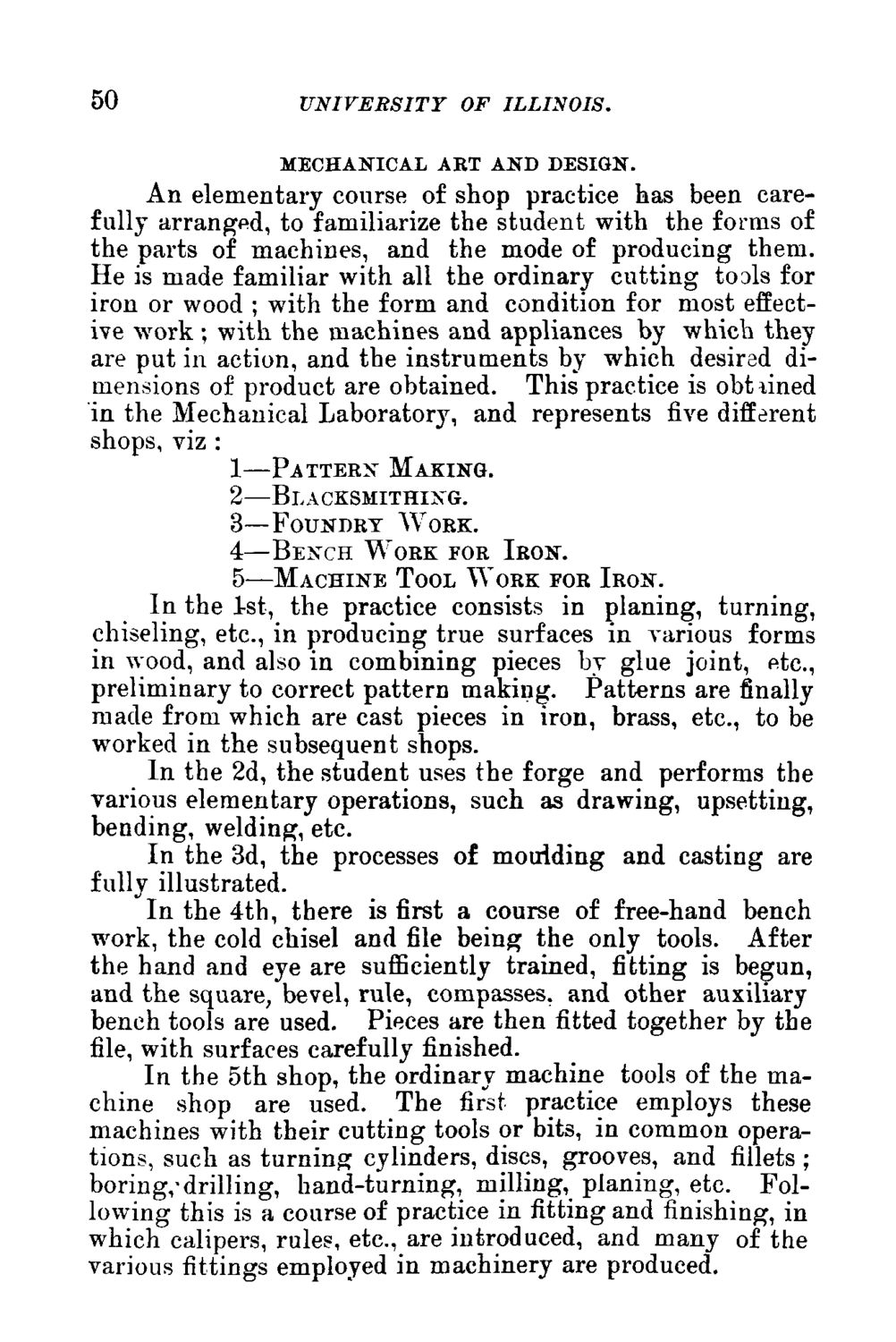| |
| |
Caption: Course Catalog - 1888-1889
This is a reduced-resolution page image for fast online browsing.

EXTRACTED TEXT FROM PAGE:
50 UNIVERSITY OF ILLINOIS. MECHANICAL AKT AND DESIGN. An elementary course of shop practice has been carefully arranged, to familiarize the student with the forms of the parts of machines, and the mode of producing them. He is made familiar with all the ordinary cutting tools for iron or wood ; with the form and condition for most effective work ; with the machines and appliances by which they are put in action, and the instruments by which desirad dimensions of product are obtained. This practice is obt lined in the Mechanical Laboratory, and represents five different shops, viz : 1—PATTERN MAKING. 2—BLACKSMITHING. 3—FOUNDRY WORK. 4—BENCH WORK FOR IRON. 5—MACHINE TOOL WORK FOR IRON. In the 1st, the practice consists in planing, turning, chiseling, etc., in producing true surfaces in various forms in wood, and also in combining pieces by glue joint, etc., preliminary to correct pattern making. Patterns are finally made from which are cast pieces in iron, brass, etc., to be worked in the subsequent shops. In the 2d, the student uses the forge and performs the various elementary operations, such as drawing, upsetting, bending, welding, etc. In the 3d, the processes of moulding and casting are fully illustrated. In the 4th, there is first a course of free-hand bench work, the cold chisel and file being the only tools. After the hand and eye are sufficiently trained, fitting is begun, and the square, bevel, rule, compasses, and other auxiliary bench tools are used. Pieces are then fitted together by the file, with surfaces carefully finished. In the 5th shop, the ordinary machine tools of the machine shop are used. The first practice employs these machines with their cutting tools or bits, in common operations, such as turning cylinders, discs, grooves, and fillets ; boring,-drilling, hand-turning, milling, planing, etc. Following this is a course of practice in fitting and finishing, in which calipers, rules, etc., are introduced, and many of the various fittings employed in machinery are produced.
| |